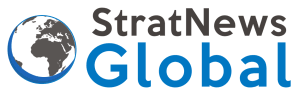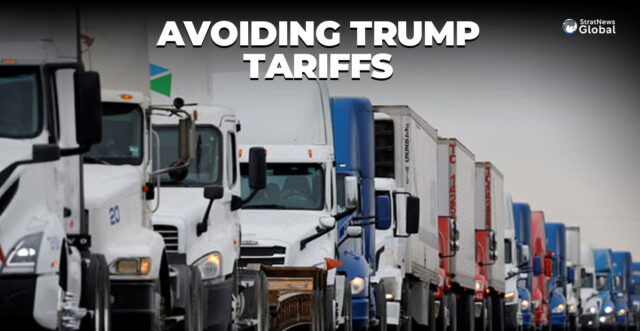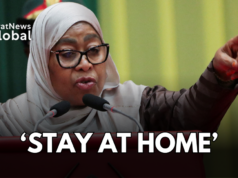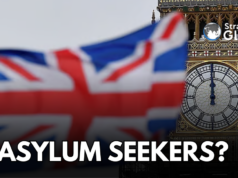Canada and Mexico will ramp up efforts this week to avoid 25% U.S. tariffs, aiming to convince Trump’s administration that their border security and fentanyl control measures are effective before the March 4 deadline.
Canada and Mexico have both taken steps to beef up border security, which bought them about a month’s reprieve from the tariffs that could wreak havoc on a highly integrated North American economy.
The negotiations this week, along with new reports from the Department of Homeland Security, will help determine whether the Trump administration extends the tariff suspension for longer, said Dan Ujczo, a lawyer specializing in U.S.-Canada trade matters.
Even if that happens, he said, Trump will likely maintain the tariff threat at least until there’s clear evidence the border measures are halting migrant and fentanyl flows.
“There’s progress being made on the security front,” said Ujczo, senior counsel with Thompson Hine in Columbus, Ohio. “But it’s overly optimistic to think that those tariffs would be fully rescinded.”
The White House, U.S. Trade Representative’s office and Commerce Department did not respond to requests for comment on the negotiations expected this week ahead of the March 4 deadline to implement the tariffs, which would apply to over $918 billion worth of U.S. imports from the two countries, from autos to energy.
More Tariff Threats
Since Trump’s initial 25% tariff threat and imposition of a 10% duty on all Chinese imports, he has heaped on more tariff actions that could muddy the waters on border negotiations.
These include substantially raising tariffs on steel and aluminium to a flat 25%, and rescinding longstanding exemptions for Canada and Mexico, the largest sources of U.S. imports of the metals.
These steep increases, which also extend to hundreds of downstream steel products, are due to take effect a week after the border tariffs, on March 12.
Trump has also said he wants to impose 25% tariffs on imports of autos, pharmaceuticals and semiconductors, in addition to ordering “reciprocal” tariffs to match the duty rates and trade barriers of other countries.
The threat of these tariffs could kick off an early launch of a renegotiation of the U.S.-Mexico-Canada agreement on trade that is due by 2026, Ujczo added.
Trump signed the USMCA into law in 2020 after renegotiating the 1994 North American Free Trade Agreement, but has increasingly expressed dissatisfaction with imports of autos from Mexico and Canada.
Progress Cited
Mexican Economy Minister Marcelo Ebrard said on Thursday that he had a “constructive dialogue” during a meeting with Trump’s top trade officials, including Commerce Secretary Howard Lutnick, White House economic adviser Kevin Hassett and U.S. Trade Representative nominee Jamieson Greer.
Ebrard said in a post on X that the “joint work” on U.S. trade matters starts on Monday.
Mexico has begun deploying as many as 10,000 National Guard troops to its northern border, as part of the agreement that Mexican President Claudia Sheinbaum said also called on the U.S. to work to stop the flow of firearms into Mexico.
Canada earlier this month created a new fentanyl czar to coordinate the fight against the smuggling of the deadly opioid, appointing senior intelligence official Kevin Brosseau to the post.
Ottawa also has reclassified drug cartels as terrorist entities and has deployed drones, helicopters and other surveillance technologies on the vast northern U.S. border.
In December, the Canadian government announced a C$1.3 billion ($913 million) increase in border security spending in response to Trump’s tariff threat.
Canadian Prime Minister Justin Trudeau has kept in close contact with Trump on the border issues in recent days, including in a Saturday call that included discussions of joint efforts to curb fentanyl trade.
He has threatened retaliatory tariffs on C$155 billion ($107 billion) of U.S. imports, including American beer, wine and bourbon and Florida orange juice, but said last week that Canada is “going to do the work” to ensure that tariffs are not imposed.
Small Package Hurdle
White House officials say Canada, Mexico and China are conduits for shipments of fentanyl and its precursor chemicals into the U.S. in small packages that are not often inspected.
A major hurdle to slowing these shipments is a pause in Trump’s abrupt order to suspend the duty-free “de minimis” exemption for packages valued at under $800 from the three countries because no procedures were in place to screen the millions of low-value express packages arriving at U.S. airports daily.
It’s unclear when the U.S. Customs and Border Protection agency will be able to close the de minimis loophole again. Trump’s initial fentanyl and border tariff order directed Homeland Security Secretary Kristi Noem to report regularly on the crisis to Trump and Congress.
(With inputs from Reuters)





